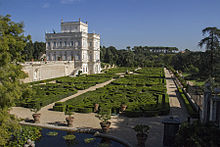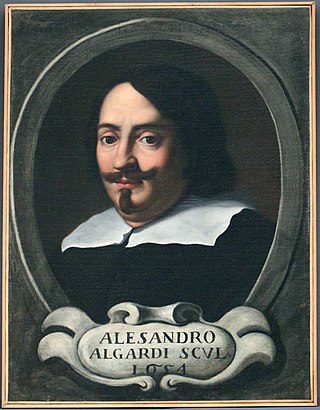
Alessandro Algardi was an Italian high-Baroque sculptor active almost exclusively in Rome. In the latter decades of his life, he was, along with Francesco Borromini and Pietro da Cortona, one of the major rivals of Gian Lorenzo Bernini, in Rome. He is now most admired for his portrait busts that have great vivacity and dignity.

The Galleria Borghese is an art gallery in Rome, Italy, housed in the former Villa Borghese Pinciana. At the outset, the gallery building was integrated with its gardens, but nowadays the Villa Borghese gardens are considered a separate tourist attraction. The Galleria Borghese houses a substantial part of the Borghese Collection of paintings, sculpture and antiquities, begun by Cardinal Scipione Borghese, the nephew of Pope Paul V. The building was constructed by the architect Flaminio Ponzio, developing sketches by Scipione Borghese himself, who used it as a villa suburbana, a country villa at the edge of Rome.

Villa Borghese is a landscape garden in Rome, containing a number of buildings, museums and attractions. It is the third-largest public park in Rome, after the ones of the Villa Doria Pamphili and Villa Ada. The gardens were developed for the Villa Borghese Pinciana, built by the architect Flaminio Ponzio, developing sketches by Scipione Borghese, who used it as a villa suburbana, or party villa, at the edge of Rome, and to house his art collection. The gardens as they are now were remade in the late 19th century.

The Villa Giulia is a villa in Rome, Italy. It was built by Pope Julius III in 1551–1553 on what was then the edge of the city. Today it is publicly owned, and houses the Museo Nazionale Etrusco, a collection of Etruscan art and artifacts.
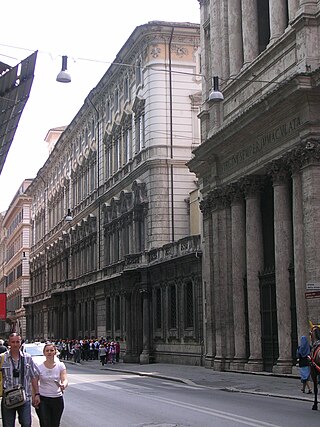
The Doria Pamphilj Gallery is a large private art collection housed in the Palazzo Doria Pamphilj in Rome, Italy, between Via del Corso and Via della Gatta. The principal entrance is on the Via del Corso. The palace façade on Via del Corso is adjacent to a church, Santa Maria in Via Lata. Like the palace, it is still privately owned by the princely Roman family Doria Pamphili. Tours of the state rooms often culminate in concerts of Baroque and Renaissance music, paying tribute to the setting and the masterpieces it contains.

The House of Aldobrandini is an Italian noble family originally from Florence, where in the Middle Ages they held the most important municipal offices. Now the Aldobrandini are resident in Rome, with close ties to the Vatican.
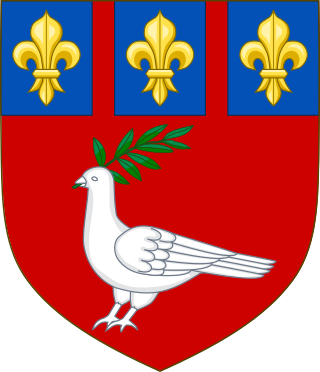
The House of Pamphili was one of the papal families deeply entrenched in Catholic Church, Roman and Italian politics of the 16th and 17th centuries.
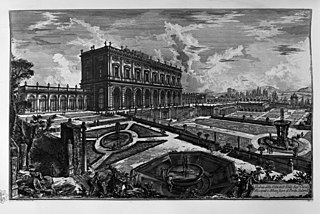
The Villa Albani is a villa in Rome, built on the Via Salaria for Cardinal Alessandro Albani. It was built between 1747 and 1767 by the architect Carlo Marchionni in a project heavily influenced by others – such as Giovanni Battista Nolli, Giovanni Battista Piranesi and Johann Joachim Winckelmann – to house Albani's collection of antiquities, curated by Winckelmann. The villa has been conserved intact into the 21st century by the Torlonia Family, who bought it in 1866. In 1870, the treaty following the Capture of Rome from the Papal States was signed here.

The Villa Ludovisi was a suburban villa in Rome, built in the 17th century on the area once occupied by the Gardens of Sallust near the Porta Salaria. On an assemblage of vineyards purchased from Giovanni Antonio Orsini, Cardinal Francesco Maria Del Monte and others, Cardinal Ludovico Ludovisi erected in the 1620s the main villa building to designs by Domenichino; it was completed within thirty months, in part to house his collection of Roman antiquities, additions to which were unearthed during construction at the site, which had figured among the great patrician pleasure grounds of Roman times. Modern works, most famously Gian Lorenzo Bernini's Pluto and Persephone, were also represented. The engraving of the grounds by Giovanni Battista Falda (1683) shows a short access avenue from a tree-lined exedra in via di Porta Pinciana and cypress-lined avenues centered on each of the facades of the main villa, laid out through open fields, the main approaches to both the villa and the Casino dell'Aurora converging on gates in the Aurelian Walls, which formed the northern bounds of the park; symmetrical parterres of conventional form including bosquets peopled with statuary flanked the main avenue of the Casina, and there was an isolated sunken parterre, though these features were not integrated in a unified overall plan. The overgrown avenues contrasting with the dramatic Roman walls inspired Stendhal to declare in 1828 that the Villa Ludovisi's gardens were among the most beautiful in the world.
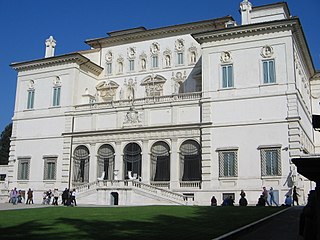
Villa Borghese Pinciana is a villa built by the architect Flaminio Ponzio, developing sketches by Scipione Borghese.

Valmontone is a comune (municipality) in the Metropolitan City of Rome in the Italian region Lazio, located about 45 kilometres southeast of Rome.

Olimpia Aldobrandini was a member of the Aldobrandini family of Rome, and the sole heiress to the family fortune.

Camillo Francesco Maria Pamphili was an Italian Catholic cardinal and nobleman of the Pamphili family. His name is often spelled with the final long i orthography; Pamphilj.

The House of Doria Pamphilj Landi was a princely Roman family of Genoese extraction. Legend has it that the origins of the Doria family date from the early 11th century, but the authentic pedigree is traced to Ansaldo d'Oria, consul of Genoa in the 12th century. The descent of the several Doria family lines in Genoa is well-known and is described in Natale Battilana's 19th-century genealogical study of old Genoese families.

The Busts of Pope Innocent X are two portrait busts by the Italian artist Gianlorenzo Bernini of Pope Innocent X, Giovanni Battista Pamphili. Created around 1650, both sculptures are now in the Galleria Doria Pamphili in Rome. Like the two busts of Cardinal Scipione Borghese, it is believed that Bernini created a second version of the bust once a flaw was discovered in the first version. There exist several similar versions of the bust done by other artists, most notably Alessandro Algardi.

Filippo Andrea V Doria Pamphili was an Italian politician. He was born in Rome, the son of Luigi Giovanni Andrea Dorea Pamphili and Teresa Orsini di Gravina. He was a recipient of the Order of Saints Maurice and Lazarus and the Order of the Crown of Italy.
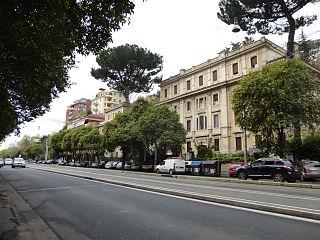
Gianicolense is the 12th quartiere of Rome (Italy), identified by the initials Q. XII. It belongs to the Municipio XI and Municipio XII. It takes its name from the Janiculum hill, which lies in the nearby rione Trastevere and whose western extremities correspond to the area of Monteverde.

The Villa del Principe, Palazzo del Principe, or Palace of Andrea Doria in Fassolo is one of the main historical suburban villas of Genoa, Italy. It was built in the 16th century in an area that it is now located in the city center, but at the time of the construction of the villa was just outside of the city walls towards Capo di Faro and the Lanterna.


